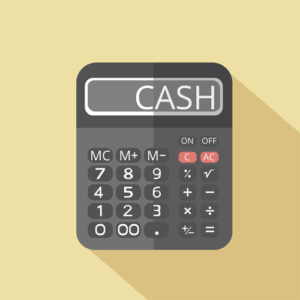Content
- How to File Taxes as an Independent Contractor
- How To Pay Taxes As An Independent Contractor: The Complete Guide
- Quarterly estimated tax filing
- Calculating Self-Employment Taxes as an Independent Contractor
- Do Independent Contractors Pay Their Own Taxes?
- Tax Deductions for Independent Contractors
- Forms & Instructions

Businesses must weigh all these factors when determining whether a worker is an employee or independent contractor. Some factors may indicate that the worker is an employee, while other factors indicate that the worker is an independent contractor. There is no “magic” or set number of factors that “makes” the worker an employee or an independent contractor and no one factor stands alone in making this determination. Also, factors which are relevant in one situation may not be relevant in another. You work from a qualified home office, which is 200 square feet — and using the simplified method, you can deduct $5 per square foot. If you can’t file your taxes by the April 15 deadline, you should use Form 4868 to file for an automatic six-month extension.
When beginning a business, you must decide what form of business entity to establish. Your form of business determines which income tax return form you have to file. The most common forms of business are the sole proprietorship, partnership, corporation, and S corporation.
How to File Taxes as an Independent Contractor
Instead of a W-2, as an independent contractor, you’ll receive a 1099-MISC. You can use that information to double-check that you’re reporting all of your income earned through the year. In order to report your Social Security and Medicare taxes, you must file Schedule SE (Form 1040 or 1040-SR ), Self-Employment TaxPDF. Use the income or loss calculated on Schedule C to calculate the amount of Social Security and Medicare taxes you should have paid during the year. The Instructions for Schedule SEPDF may be helpful in filing out the form. As a self-employed individual, generally you are required to file an annual return and pay estimated tax quarterly.
- Like all expenses, however, you can only write off the business portion.
- That means no federal income taxes, Social Security taxes or Medicare taxes are taken out before you receive the money.
- The tax rules for independent contractors ensure that they’re paying an appropriate amount in taxes, based on their earnings.
- You can use that information to double-check that you’re reporting all of your income earned through the year.
- However, your earnings as an employee may be subject to FICA (social security tax and Medicare) and income tax withholding.
- The difference between gross earnings and business expenses is the net income, on which taxes are due.
There may be other IRS forms you’ll need to file, depending on the deductions you take. To calculate the self-employment taxes mentioned above, you’ll use Schedule SE. You’ll need to file Schedule SE if you have at least $400 in net income from self-employment.
How To Pay Taxes As An Independent Contractor: The Complete Guide
Employed professionals are subject to a FICA tax that is split between themselves and their employers. But if you’re self-employed, you’re responsible for paying the full share of those Social Security independent contractor tax form and Medicare contributions, collectively known as SECA. For example, if you’re picking up a client and have to pay for parking while you wait for them, you can deduct that parking expense.
- Although these forms are called information returns, they serve different functions.
- They aren’t supported by a regular salary when business is terrible, and their income is unpredictable and highly volatile month over and year over year.
- For the past 38 years, businesses filed Form 1099-MISC to report payments to independent contractors.
- That means you’re subject to a different set of tax payment and filing rules than employees.
- Add your estimated self-employment taxes ($14,130) and your estimated federal income taxes ($13,212), and you get an estimated federal tax liability of $27,342.
Independent contractors have a higher degree of control over the work they do, their schedule, the tools they use, who they work for, and the marketing of their business. They are typically paid on a per-project basis, and because taxes are not withheld by the other party, the contractor must handle this themselves. If you run a small business on the side while employed somewhere that withholds federal income taxes from your paycheck, avoid quarterly payments by increasing your federal withholding.
Quarterly estimated tax filing
If you also have independent contract income, that might be reported via one or more 1099 forms. By April 15 of the subsequent tax year, you would prepare, file, or e-file your income tax returns to the IRS and states. The eFile.com tax app makes it easy for you to prepare and eFile your income taxes for federal and state income tax together. If you’re debating between filing your own taxes as an independent contractor or hiring a tax professional, consider your business income and expenses. If you have a straightforward tax situation with few deductions, then it’ll be less expensive to use a tax filing software yourself. If you’re self-employed or a freelancer, you likely get paid as an independent contractor rather than an employee.
If you earned less than $600, you still must report the income, but the payer doesn’t have to send you a Form 1099-MISC. If you work with multiple people or businesses throughout the year, you may receive multiple copies of this form. Payers are required to have these completed and postmarked by the end of January each year. Generally, if you’re an independent contractor you’re considered self-employed and should report your income (nonemployee compensation) on Schedule C (Form 1040), Profit or Loss From Business (Sole Proprietorship). Most self-employed individuals will need to pay self-employment tax (comprised of social security and Medicare taxes) if their income (net earnings from self-employment) is $400 or more. Use Schedule SE (Form 1040), Self-Employment Tax to figure the tax due.
Calculating Self-Employment Taxes as an Independent Contractor
Form 945, Annual Return of Withheld Federal Income Tax, must be filed if the payer is required to deduct backup withholding. For more information on Form 945, see Topic No. 307, Backup Withholding and Publication 15, (Circular E), Employer’s Tax Guide. Thus, when working as an independent contractor, it’s vital that you track your business expenses . When you file your tax form for the year, you’ll want to complete a Schedule C. You’ll likely list the majority of your deductions in Part II of your Schedule C (Form 1040). An independent contractor is a self-employed person or entity contracted to perform work for—or provide services to—another entity as a non-employee.

Prepare and eFile your next return by Tax Day and see how to add your 1099-NEC or 1099-MISC to your return and eFileIT. If you are wondering what it means to be an independent contractor, see below. She has over 7 years of experience providing strategic legal advice to individuals and business clients of all sizes, from start-ups to large corporations. Brittany has a strong understanding of the legal issues related to technology and software and is well-versed in drafting and negotiating contracts ranging from software licenses to data sharing agreements. She is a highly-skilled negotiator and is adept at finding creative solutions to challenging legal issues. There may be confusion for employers on an
independent contractor vs. employee.
Do Independent Contractors Pay Their Own Taxes?
If you weren’t an employee of the payer, where you report the income depends on whether your activity is a trade or business. You’re in a self-employed trade or business if your primary purpose is to make a profit and your activity is regular and continuous. To complete your taxes, you’ll need to gather all your forms and use them to complete certain forms on your return. Be sure to visit our Unemployment Resource Center for helpful articles and information.
